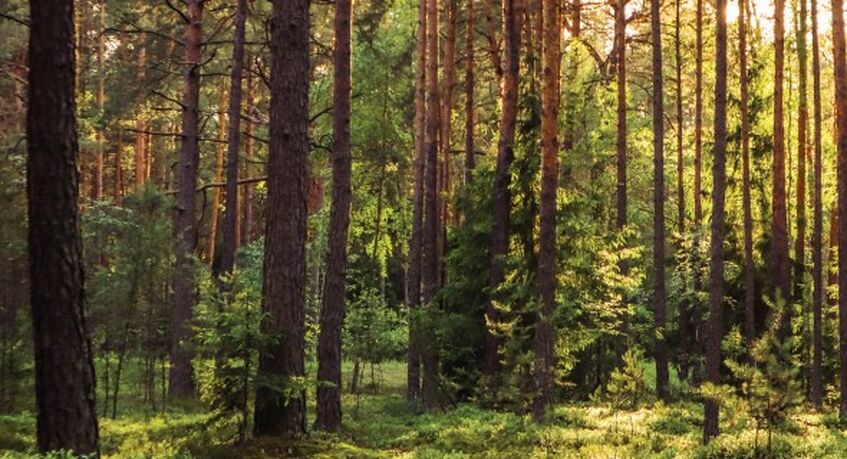I'm Thinking of Buying a Woodland in Scotland – What Do I Need to Consider?

With increased recognition of the role of forests and woodland in achieving climate goals, more people are considering the possibility of purchasing small scale woodland and forests for recreational and environmental reasons.
A recent report by the Scottish Land Commission noted that one positive side-effect of the recent fall in values of forestry is that the market has been opened up to a greater variety of people. While the prospect of owning woodland can be appealing, the process of acquiring it can be daunting for anyone approaching it for the first time.
What will the woodland be used for?
Your first consideration when purchasing woodland or forestry is what you might want to use the woodland for. Will you sell carbon credits generated by the planting trees on site? Do you plan to build an off-grid cabin to operate as a short term let or as a holiday home? Perhaps you’re thinking about using it for nature conservation or as a venue for outdoor events. Or it may be that you intend to do a combination of these things. Having clarity regarding your ambitions at an early stage will make it easier to identify the right property and will allow your solicitor to best advise you on any legal issues which might affect your ability to use the woodland as planned.
Funding the purchase
Unlike residential property where lending is commonplace, it can be difficult to obtain lending to fund the purchase of a woodland. This is important to bear in mind when setting your budget and making offers as you may need to have all, or a significant portion, of the price available in cash.
Access rights
One of the key things which your solicitor will check when you purchase a woodland is whether the title includes the rights of access you need to use the woodland as intended. This is why it is crucial to establish what use you plan to make of the woodland. If you intend to change the use to which the woodland is put in future (for example by diversifying it to include a cabin or glamping pods) you will need to make sure the title includes rights of access for construction vehicles and rights of access for guests to reach the site. Your solicitor will be able to advise you on whether additional rights of access need to be obtained from the seller or any neighbouring landowners.
There may be third parties who have vehicular access rights through the woodland. Again, your solicitor will be able to advise whether this is the case and advise you on the arrangements for maintenance of any shared roads.
LBTT
Like all purchases of land in Scotland, the purchase of a woodland will be subject to Land and Buildings Transaction Tax (LBTT) which is broadly Scotland’s equivalent to Stamp Duty Land Tax in England and Wales. Assuming there are no dwellings on the land and the purchase price is less than £150,000 then no LBTT will be payable. LBTT at a rate of 1 per cent is payable on any portion of the price between £150,001 and £250,000, and a higher rate of 5 per cent applies to any portion of the price above £250,000.
If the woodland includes a residential dwelling, or dwellings, different rates of LBTT will apply and you may be liable to pay the Additional Dwelling Supplement. The Additional Dwelling Supplement as of July 2025 is 8 per cent, which applies to the part of the purchase price apportioned to the residential dwelling.
Insurance
Once the purchase of the woodland is complete it would be prudent to put in place appropriate insurance. The right type of cover will be depend on the use to which the woodland is put, but appropriate insurance might include insuring the trees against storm damage, pests, diseases and wildfire. If there are any buildings within the woodland, such as a log cabin or glamping pods, these will also need to be insured.
You will also want to consider putting in place public liability insurance to protect you should a member of the public be injured or otherwise come to harm while on your land.
Ongoing management
The work doesn’t stop when your woodland purchase is complete. Woodlands require ongoing management, including planting trees, monitoring trees for damage by pests and diseases, constructing fences and protecting growing trees from damage by grazing animals. Depending on the size of the woodland and the type of work required you may wish to enlist the help of a specialist woodland manager. A woodland manager can also advise on whether you might be eligible for Scottish Forestry grant scheme funding and assist you with any applications for funding and felling licences. If you plan to add any structures to the woodland, for example an off-grid cabin, you may need to enlist the help of architects, planning experts and building contractors.
Here at Wright, Johnston & Mackenzie we are expert in guiding clients through these issues. If you are looking for legal advice on any aspect of the purchase or sale of a woodland in Scotland contact Eilidh Campbell on emc@wjm.co.uk.
This article first appeared in the Forestry Journal, and provides an overview of the law in force at the time of publication – professional advice should always be sought before taking any action in reliance of the information.
The information contained in this newsletter is for general guidance only and represents our understanding of relevant law and practice as at October 2025. Wright, Johnston & Mackenzie LLP cannot be held responsible for any action taken or not taken in reliance upon the contents. Specific advice should be taken on any individual matter. Transmissions to or from our email system and calls to or from our offices may be monitored and/or recorded for regulatory purposes. Authorised and regulated by the Financial Conduct Authority. Registered office: 319 St Vincent Street, Glasgow, G2 5RZ. A limited liability partnership registered in Scotland, number SO 300336.




